Visualizing Ambient Rhetorics

In 1838, Louis Daguerre made one of the first photographs of people that we know of when he pointed his camera out his window to capture the boulevard below (figure 1). But given the long exposure time needed for the daguerreotype, much of the life on the street—its moving bodies—goes unseen. Only the shoeshiner and his customer appear because they remained relatively still long enough to be visible (figure 2). Photographers and photographs have been attempting to capture the movements of urban life ever since.
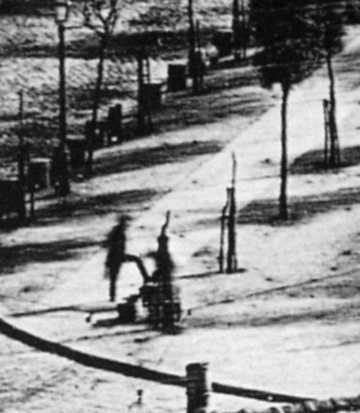
Consider William Henry Fox Talbot, another pioneer of photography in the mid-1800s, who writes: “If we proceed to the City, and attempt to take a picture of the moving multitude, we fail, for in a small fraction of a second they change their positions so much, as to destroy the distinctness of the representation.” Yet, by the late-1800s, Eadweard Muybridge was developing photographic studies of motion while new photographic processes and equipment allowed photographers to take their cameras into the streets, and we see the early development of street photography (figure 3). With street photography, the moving multitude and the city itself become generative sources of photographic images. This brief historical sketch highlights the relationship between photographic practices and the representation of the city—its people and places, its movements and rhythms.
From Daguerre’s shoeshiner to Talbot’s moving multitudes to Muybridge’s galloping horse, photographers and photographic techniques have long attempted to capture not only the readily visible but also the apparently imperceptible. With a camera in hand, photographers may focus on the latent, the background, the ambient—all that which typically goes unseen. As such, rhetoric scholars influenced by object-oriented ontologies and new materialisms may learn from and use photographic techniques to attend to and to visualize the “vibrant materialities” (Bennett 96) and “the materiality of our ambient environs, our affective comportments, the impact of that which escapes conscious notice” (Rickert x). I propose the concept of ambient visualities as a visual research method that makes visible the ambient environs, the background rhythms of material reality, what Thomas Rickert refers to as “the always ongoing disclosure of the world” (xii). Ambient visualities are informed by a mindfulness toward kairos that notices “the momentary passing nature of time for the purposes of rhetorical invention” (Peary 24). Ambient visualities work with the passage of time as affective lingering, an aesthetic rhythm that evokes a multisensory experience in “vibrant, ecologically attuned environments” (Rickert xv). In this way, ambient visualities become a manner not only of doing ambient rhetorics but also of responding to the world.
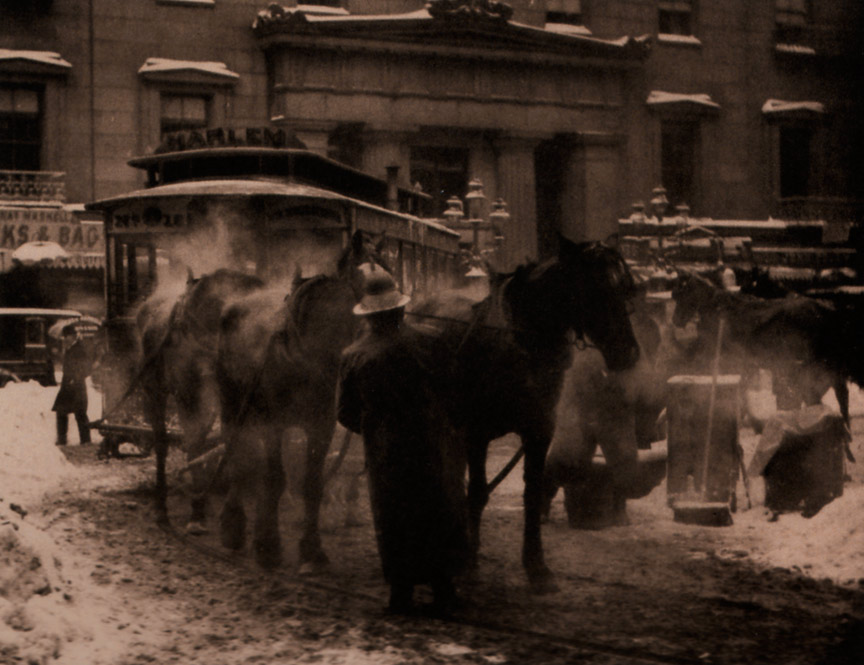
Rhetoric scholars interested in ambient rhetorics need to push the limits of representation to include a more marked attention to “disclosive ambience” (McNely 141). I do so here by bringing together ambient rhetoric and Henri Lefebvre’s rhythmanalysis to examine one imaging practice—the production of animated GIFs—as an empirical visual method of sensing the rhythms of our material surroundings. Put simply, animated GIFs offer a visuality in a style of doing rhetorical criticism, ambiently.
Sensing the Background: Ambient Rhetorics
Echoing Talbot’s observation, William Uricchio explains how new imaging technologies reflect “processes of mediation between the city and its image, shifting the focus from the things seen to the manner of seeing, and in the process revealing something about the frameworks through which we image—and imagine—the city” (55). Uricchio argues that what is often more important, or at least overlooked, is not what is in images of the city, but how image makers and viewers relate to the world. Rhetoric scholars interested in object-oriented ontologies and new materialisms have similarly turned their attention from what to how—from the what of rhetoric (or, the rhetoric of what) to how rhetoric is an ongoing situatedness or a situated ongoingness, a way of being in the world. One influential study of this move is Rickert’s Ambient Rhetoric.
Rickert intends ambient rhetoric to orient us to pre-intelligible background conditions to understand how rhetorical being occurs through ongoing attunements. Together, ambience and attunement emphasize our fundamental entanglement with the world so that “to be situated means that one’s emplacement is inseparable from the rhetorical interactions taking place” (34). As a theoretical development, ambient rhetoric asks rhetorical scholars to consider the latency of the background. But a question remains for rhetorical criticism: How do rhetoric scholars make visible that which goes unnoticed? How do we shift our attunements?
Laurie Gries and Brian McNely are two rhetoric scholars who have begun to develop empirical visual methods that bring forth ambience and attunement. In Still Life with Rhetoric, Gries not only grounds rhetoric in new materialist ontologies—emphasizing becoming, agency, vitality, and consequentiality—but also develops a method for studying such ontological commitments. Rather than interpreting the meaning or significance of an image, Gries’s “iconographic tracking” follows what an image does—how an image circulates and transforms in the process of enacting consequences in the world. For Gries, an image is a “wild eventfulness” (102), and iconographic tracking “describes” its “divergent actualizations” (101). Gries shows us that to understand an image we have to follow its multiple and simultaneous material manifestations.
Similarly, McNely begins to understand by standing around, attuning to the “suasive, circulatory intensities” of humans and things, which, in his case, involves the people and books coming and going from The Little Free Library in his neighborhood (140). Lingering and following, McNely develops a “visual autoethnography” that demonstrates the “circulations, practical activities, and intensities that co-constitute this little thrown together world” (147). Slowing down to write field notes and to take photographs allows McNely to feel the entanglements of this place and his own ongoing situatedness: “I am a different rhetor for having been immersed in these circulations, for attuning to elements of the everyday and formulating research questions that I would not have generated otherwise” (153). Gries’s iconographic tracking and McNely’s visual autoethnography show how rhetoric scholars may invent methods that shift attention from symbolic interpretation to ambient disclosure.

In advancing ambient visualities, I also want to attend to situatedness and ongoingness. Similar to how Gries and McNely productively focus on circulatory intensities, I am interested in the momentary capturing of rhythm, akin to Daguerre’s polishing shoeshiner and Stieglitz’s billowing puffs of body heat. Ambient visualities attempt to make visible seemingly imperceptible situated ongoingness, asking “What else is happening here?” I suggest that Lefebvre’s rhythmanalysis, combined with ambience and attunement, offers one possibility for responding to this question, especially when made visible with an imaging technique that emphasizes “the loop” (figure 4).
Feeling the Rhythm: Ambient Visualities
Lefebvre’s rhythmanalysis accords well with Rickert’s ambience and attunement and McNely’s visual autoethnography as a manner of finding ourselves amid the world’s situated ongoingness, the rhythms already taking place. Lefebvre proposes rhythm “as a mode of analysis” (xii) and suggests that the rhythmanalyst uses her body as a metronome to listen with all her senses, attending to the physical, biological, and social rhythms of things: “For him, nothing is immobile. He hears the wind, the rain, storms; but if he considers a stone, a wall, a trunk, he understands their slowness, their interminable rhythm” (20). Recalling McNely’s “suasive, circulatory intensities,” attuning to rhythms that are already happening becomes a way of making vivid ambience, a way of “materializing the sensory” (Chen 3). The rhythmanalyst develops a disposition wherein everything has rhythm, and “to grasp a rhythm it is necessary to have been grasped by it; one must let oneself go, give oneself over, abandon oneself to its duration” (Lefebvre 27). The rhythmanalyst is worked over and works with differential rhythms. To let oneself go, to be grasped, requires “a bit of time; a sort of meditation on time, the city, people, is required” (30). This “meditation on time” finds correspondence in Rickert’s notion of kairos as a gathering of the worldliness that is “always situating us in arrangements” (Rickert 96).
Indeed, combining ambience and rhythmanalysis requires a kairotic mindfulness as an affective disposition to the world. Peary argues that kairotic mindfulness offers “a dynamic time and space for composing that emphasizes actual time, separating invention from performance” (23). Rather than grasping at rhythm, kairotic mindfulness allows the composer to be grasped by rhythm (figure 5). The rhythmanalyst both composes and is composed, what Rickert refers to as “an I-world hybrid already replete with an a priori affectedness” (xviii). Similarly, Chen notes that the rhythmanalyst’s affective disposition allows one to “inhabit the world of things as one’s bodily rhythms are conjoined out of a garland of rhythms” (42). Attending to rhythm thus becomes a way of listening to the “vibrant matter” of the world.1

Although Lefebvre states that “no camera, no image or series of images can show these rhythms” (36), I propose that composing with kairotic mindfulness makes possible ambient visualities that may offer glimpses into how rhythms enact the conditions of our being and how we relate to our material environs, such as the city. Ambient visualities are not only grounded in place—situatedness—but also imbued with groundlessness—ongoingness: the shifting flux of rhythms that constitute the unnoticed ambience of being.
Animated GIFs. As the 2012 USA Word of the Year, animated GIFs have enjoyed a renaissance in the last few years (Martin). Animated GIFs perform well in Internet culture because they isolate the payoff moment—the did-you-see-this moment of Internet memes. On one hand, as a visual joke with minimal setup, the animated GIF allows users to waste time more efficiently. On the other, the animated GIF does not waste time but rather incorporates it as a rhythmic loop. In this way, the animated GIF offers a way of composing ambient visualities that make visible the polyrhythmia existing within any moment.
The photograph traditionally has been understood to capture, freeze, or preserve a moment in time (Green). Notably, Barthes argues that the photograph suggests that which-has-been is already dead. Confronted by the specter of death, all the viewer can do is shudder, as Barthes says, “over a catastrophe which has already occurred” (96, emphasis in original). What happens, however, when we begin to make the photograph itself shudder? When we begin to move the still, what else shudders?
For the rhythmanalyst, animating the still requires an act of kairotic mindfulness that, as suggested above, separates invention and performance. In the invention phase, the rhythmanalyst, as Lefebvre implores, should “look around [herself] at this meadow, this garden, these trees, and these houses. . . . Go deeper. . . . Be like the wind that shakes these trees” (80). The rhythmanalyst thus begins to be tuned by rhythms, caught in their polyrhythmic whirl. Only then does she decide what to photograph or record. In this way, the rhythmanalyst’s senses may be both softened and heightened in the felt experience and in the reflection upon that experience (figure 6).
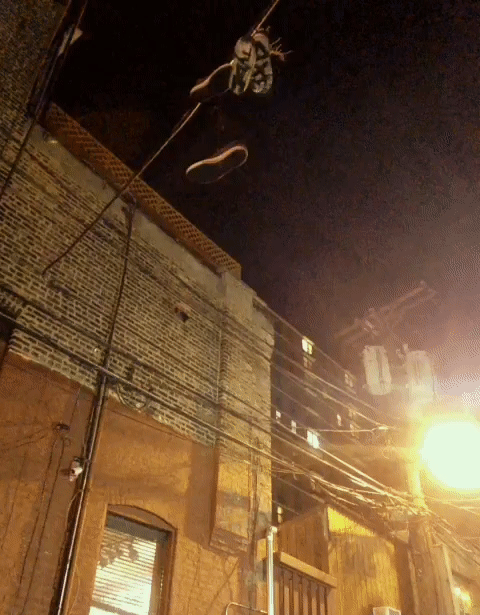
Once the successive photographs or video is recorded, the rhythmanalyst may enter the performative phase in creating the animated GIF. Here, the animated GIF moves the visual rhetoric of the image away from the past (or death) and toward the loop, thus enlivening the rhythms found within the photograph—an ambient visuality. That is, the animated GIF discloses ambience: What else is here in this ongoing moment?
Building upon Lefebvre’s theory of “moments,” Chen explains that a moment has both duration and ephemerality, a “recurring undulation”: “The consciousness of a moment is solicited by its return (could there always be a lag between the initial act of a moment and our recognition of it?)” (21). An interval exists between the sensory awareness of a rhythm and conscious attention to it. The animated GIF has the potential of making visible this interval, which splits time “in two directions at once: that which is ‘no longer’ and that which is ‘not yet’” (Lomax 58). The loop returns this interval again and again and, in so doing, reveals the situated ongoingness of rhythms and their correspondence to vibrant matter. Each recurrence returns the viewer to the felt experience: “The repetition of a small moment, watched again and again at unusual speeds, brings tiny details into relief in a way I think you’d absolutely miss if you watched a video of the same moment once” (Miller). In this way, animated GIFs—by moving the still, by making it shudder—reveal how rhythms create our affective experience.
The ambient visuality of the animated GIF may be best exemplified in a cinemagraph, which is “an image that contains within itself a living moment that allows a glimpse of time to be experienced” (Burg and Beck). The cinemagraph offers an ambient visuality that amplifies one rhythm amid the polyrhythmia of the moment. Composing a cinemagraph requires a kairotic mindfulness that approaches the present moment as “a highly improvisational and inventive space” (Peary 24). The recurring undulations of animated GIFs and cinemagraphs offer a glimpse into rhythms caught midstream, moving rhetoric scholars away from representation to sensuous, affective response, thereby transforming how we relate to our ambient environs, such as our situated ongoingness within the city.

Staying in the Loop: Conclusion
What else is happening here? What moves? What moves me? How to attend to the moving multitudes, the polyrhythmia of urban life? Feeling with the entire body, allowing the body to be grasped by rhythm, cultivating kairotic mindfulness, ambient visualities linger in the world as an abundant garden in which the rhythmanalyst as gardener putters and plucks as generative, inventive practices: persuasion as suasion, as swaying with the breeze. The rhythmanalyst, composing with ambient visualities, elicits the rhythmic momentariness of matter. By looping the rhythm in things, animated GIFs reveal an ambient visuality evoking the wondrous warp of being in which we may linger, again and again.
Similar to Gries and McNely, I present ambient visualities as an empirical visual method for doing rhetorical criticism, ambiently, that is, with a new materialist orientation. Although I have focused on animated GIFs as one style of ambient visuality, other imaging techniques should be explored for their potential, such as slow photography, multiple exposures, and time-lapse photography. With any imaging technique, composing (with) ambient visualities requires a kairotic mindfulness that remains suggestive and experimental. In this way, ambient visualities vitalize rhetoric and rhetorical criticism as the art of the background, the art of noticing, the art of noticing the background. Chen notes that moments “dilate to illuminate the organization of the everyday” (20). Thus, composing (with) ambient visualities becomes a way of not only visualizing urban life but also becoming entangled in it. Ambient visualities catch us midstream, in the back and forth of rhythms, like Daguerre’s shoeshiner—or, like the cave paintings of Lascaux and Chauvet with multiheaded horses and eight-legged bison that undulate with the cave walls and flickering flambeau (Marshall). Within these rhythms that create this ambience, everything becomes . . . for the time being.
Endnotes
- Dividing invention from performance may raise a question: “If rhythmanalysis is practised by a human subject . . . do we then not fall into the conundrum of the subject/object division?” (Chen 42). Chen argues that rhythmanalysis, rather than replicating the subject/object division, is a reflexive and creative practice of an emergent “bodily consciousness” (42). Such a reflexive, creative practice finds correspondence in Karen Barad’s concept of “agential cut.” Any observation makes a “cut” that sutures and separates what is under consideration. Rather than disentangling subject and object, the agential cut provides “a contingent resolution of the ontological inseparability within the phenomenon and hence the conditions for objective description” (348). As Gries argues in developing iconographic tracking, foregrounding description prior to explanation helps to disclose and “make transparent” the consequential manifestations of images and things (101). Similarly, I intend ambient visualities as a method of rich visual description. return
Works Cited
- Barad, Karen. Meeting the Universe Halfway: Quantum Physics and the Entanglement of Matter and Meaning. Duke UP, 2007.
- Barthes, Roland. Camera Lucida: Reflections on Photography. Hill & Wang, 1981.
- Bennett, Jane. Vibrant Matter: A Political Ecology of Things. Duke UP, 2010.
- Burg, Kevin, and Jamie Beck. “The History of Cinemagraphs.” Cinemagraphs, 2011, cinemagraphs.com/about/.
- Chen, Yi. Practising Rhythmanalysis: Theories and Methodologies. Rowman & Littlefield Publishers, 2017.
- Daguerre, Louis. Boulevard Du Temple. 1838. Wikipedia, en.wikipedia.org/wiki/Boulevard_du_Temple#/media/File:Boulevard_du_Temple_by_Daguerre.jpg.]
- Green, David. “Marking Time: Photograph, Film, and Temporalities of the Image.” Stillness and Time: Photography and the Moving Image, edited by David Green and Joanna Lowry, Photoworks/Photoforum, 2005, pp. 9-22.
- Gries, Laurie E. Still Life with Rhetoric: A New Materialist Approach to Visual Rhetorics. UP of Colorado, 2015.
- Lefebvre, Henri. Rhythmanalysis: Space, Time, and Everyday Life. Translated by Stuart Elden and Gerald Moore, Continuum, 2004.
- Lomax, Yve. “Thinking Stillness.” Stillness and Time: Photography and the Moving Image, edited by David Green and Joanna Lowry, Photoworks/Photoforum, 2005, pp. 55-64.
- Marshall, Colin. “Was a 32,000-Year-Old Cave Painting the Earliest Form of Cinema?” Open Culture, 26 July 2016, www.openculture.com/2016/07/was-a-32000-year-old-cave-painting-the-earliest-form-of-cinema.html.
- Martin, Katherine. “Oxford Dictionaries USA Word of the Year 2012 Is ‘to GIF.’” OxfordWords Blog, 12 Nov. 2012, blog.oxforddictionaries.com/2012/11/us-word-of-the-year-2012/.
- McNely, Brian J. “Circulatory Intensities: Take a Book, Return a Book.” Rhetoric, through Everyday Things, edited by Scot Barnett and Casey Boyle, U of Alabama P, 2016, pp. 139–54.
- Miller, Liz Shannon. “When Is an Animated GIF Better than a Video?” GigaOM, 6 Mar. 2011, gigaom.com/2011/03/06/when-is-an-animated-gif-better-than-a-video/.
- Peary, Alexandria. “The Role of Mindfulness in Kairos.” Rhetoric Review, vol. 35, no. 1, 2016, pp. 22–34. Taylor and Francis+NEJM, doi:10.1080/07350198.2016.1107825.
- Rickert, Thomas. Ambient Rhetoric: The Attunements of Rhetorical Being. U of Pittsburgh P, 2013.
- Stieglitz, Alfred. The Terminal. 1893. Wikipedia, en.wikipedia.org/w/index.php?title=Alfred_Stieglitz&oldid=779145489.
- Talbot, William Henry Fox. The Pencil of Nature. Project Gutenberg, 2010, www.gutenberg.org/files/33447/33447-h/33447-h.html.
- Uricchio, William. “The City Seen: Strategies of Coherence, Evocation and Simulation in Urban Representation.” Emergent Urbanism: Urban Planning and Design in Times of Structural and Systemic Change, edited by Tigran Hass and Kristor Olsson, Ashgate, 2014, pp. 55–61.
Cover Image Credit: Daguerre, Louis. Boulevard Du Temple. 1838.
Keywords: ambient rhetoric, new materialism, rhetorical criticism/rhet-crit, rhythmanalysis, visual rhetoric

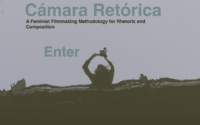
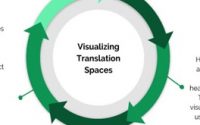
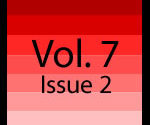
 Jason Kalin is an assistant professor in the Department of Writing, Rhetoric, & Discourse at DePaul University. His research interests are in rhetorical theory, visual and material rhetorics, digital rhetorics, and new media studies. He has published in Rhetoric Society Quarterly, Space and Culture, and Visual Communication Quarterly, among others.
Jason Kalin is an assistant professor in the Department of Writing, Rhetoric, & Discourse at DePaul University. His research interests are in rhetorical theory, visual and material rhetorics, digital rhetorics, and new media studies. He has published in Rhetoric Society Quarterly, Space and Culture, and Visual Communication Quarterly, among others.